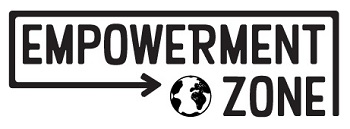While at the Organic Expo in Sydney recently we were very happy to taste some of Australia's fine organic wines and even a beer!
We were particularly excited about the Burragumbilli Certified Organic Lager and thought it would be a great treat for Dad on Father's Day…without the hangover!
A boutique beer brewed in New South Wales, Burragumbilli is growing in popularity and reputation as a quality, clean tasting “green” choice for the thinking drinker. It has no added sugar, no preservatives and no harmful chemical residues.
The beer follows an organic processing chain from farm to malt house to brewery and bottling to achieve the high status Australian Certified Organic (ACO) certification.
Organic malts and hops have no chemical residues to interfere with fermentation producing a clean, unadulterated beer. Organic lager has exceptional clarity without the use of harmful chemical fining agents, and it has a clean, flavourful taste.
Would you like a cocktail with that beer?
If you are drinking a beer that is not certified organic you are likely to be imbibing a chemical cocktail at the same time. It can include the residues from farming processes, storage and preservative requirements, several of which are carcinogenic, as well as residues of industrial cleaners and chemical additives to the brew such as flavours, colours, and preservatives.
The benefit of organic beverages is not only are they chemical free but they are also either preservative free or produced with low preservatives, which has a proven tendency to be gentler on your system with less headaches the next day.
Burragumbilli barley and hops are grown without industrial fertilizers, pesticides, weedicides or fungicides and therefore are without the common chemical residues of conventionally grown crops. Hops in particular are very susceptible to fungal diseases and conventionally grown crops generally require fungicidal applications. Organic hops must be grown with wider spaced plants and rigorous pruning to improve sunlight penetration and airflow to restrict fungal infections.
Where to buy a Burra
Check the list of retail outlets for Burragumbilli organic beer here. If your local bottle shop doesn’t already, why not ask them to start stocking Burragumbilli. Plus, it now has the distinction of being the first organic beer offered on Virgin Australia international and some domestic flights.
Organic Wines
The 2009 Temple Bruer Thistle Hill Riesling was awarded the Best Wine of Show & Best White at the Australia / New Zealand Organic Wine Show, whilst the 2007 Temple Bruer Shiraz Malbec Preservative Free took the Best Red & Best Preservative Free trophy.
Temple Bruer is regarded as one of the pioneers in organic viticulture and oenological practices in Australia. David and Barbara Bruer established a small vineyard in the early 1970's on a property situated on the main road between the towns of Strathalbyn and Milang, in the grape growing district of Langhorne Creek in South Australia. David was in charge of Roseworthy College's Oenology Department before becoming a full-time vigneron, while Barbara also taught chemistry at Roseworthy College and Flinders University for ten years.
Today Temple Bruer is Australia's largest certified organic label and its reputation for quality wine is firmly established.
www.organicwine.com.au is an online wine retailer specialising in organic wine, biodynamic wine and preservative free wine. Organic, biodynamic, and minimal interference practices when employed competently lead to a superior and unique quality product. The individual “personality” of each wine can be fully expressed for us all to savour.

















































